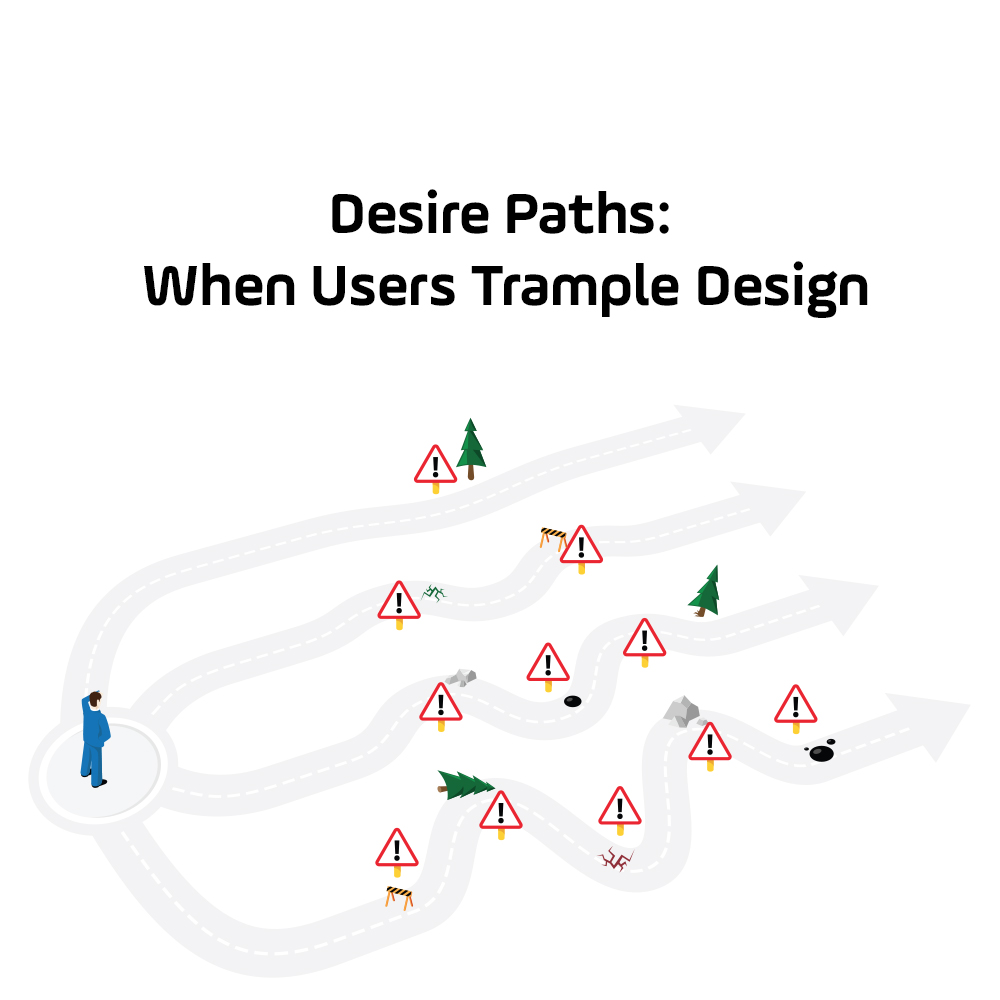Two roads diverged in a wood, and I -- I took the one less traveled by, And that has made all the difference. -- Robert Frost
Sometimes the road less traveled is less traveled for a reason. -- Jerry Seinfeld
Desire paths. Whether you are aware of them or not, you see them all the time. A dirt path bisects a patch of grass, cutting the corner between a 90º turn in a sidewalk. Not only have we seen them, we most often use these worn paths since everything points to the fact that they are the more efficient way to go. Much to the chagrin of the urban planner, this newly defined path is a natural reaction to a fabricated situation. And it can’t be ignored. In fact, a good urban planner would see this as insight and pave that new, informed sidewalk since user experience has trumped design.
It’s so important for marketers to recognize any new pathways created by the interactions their customers have with a given product or service and adapt accordingly.
Nature has its way of discovering the path of least resistance. Humans usually pick the quickest way. To our natural benefit, we are a bit lazy. Rats certainly are good at shortcuts. Hell, even water takes the shortest, most efficient route. This happens in the sales cycle as well. You can open a store, or create a e-commerce site or develop a brilliant crafted marketing campaign aimed at capturing sales leads. But what if you were able to see the paths that customers ACTUALLY took to enter your store, or where they left your website or how many actually filled out your form that has a few too many boxes to fill. It’s so important for marketers to recognize any new pathways created by the interactions their customers have with a given product or service and adapt accordingly. But how do we see those pathways when they aren’t as obvious as a path of worn-down grass? One word: data.
It’s no secret that data is invaluable. But sometimes you need to find a way to see the invisible to discover the value. It is said that urban planners in Finland use a unique way of understanding how pedestrians interact with a particular city: they wait for a snowfall and study the footpaths that are created once the paved sidewalks have disappeared. Once the “suggested” route is gone, new pathways emerge — because as a new building arises or an old bus stop is removed, the environment intrinsically changes, whereas the sidewalks do not.
It's no secret that data is invaluable. But sometimes you need to find a way to see the invisible to discover the value.
The University of Berkeley was said to have developed part of their campus without pathways and allowed the natural flow of people (and their grass-trampling tendencies) to illustrate where the paved paths should go. It seems so simple. But without the data surely they would never have mapped the campus better than time did. And that's where the data comes in for marketers. You've got it. Use it. Find those desire paths that emerge from it. The answers are there. You just have to learn how to see the path that is right before your eyes and pave it for your customer. Without knowing it, they are telling you how to make their experience better. Let those desire paths lead the way.


